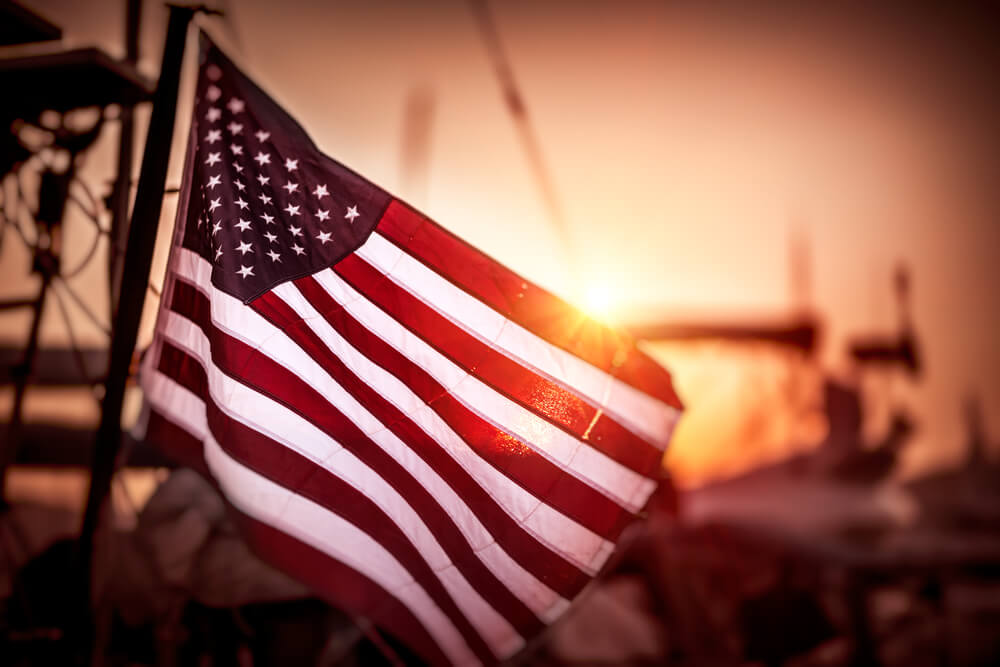Get A Free Legal Consultation
- We fight to maximize your results
- Many clients get results in as few as 90 days
- No out-of-pocket costs for you or your family






Over 30% of all mesothelioma patients were veterans of the U.S. Armed Forces. As a veteran-founded law firm, Simmons Hanly Conroy exists to help veterans with mesothelioma pursue legal compensation as well as benefits from the U.S. Department of Veterans Affairs (VA).
If you or someone you love was exposed to asbestos in the U.S. military and later diagnosed with mesothelioma, you may be eligible for compensation. Call (800) 326-8900 now to see if you qualify.
From the 1930s to the late 1970s, asbestos was used extensively in military vehicles, equipment and buildings. No matter the branch of the military you served in, you may have been at risk of asbestos exposure.
In the 20th century, the U.S. Army used asbestos to ensure the durability of its jeeps, trucks and tanks. At the time, it was believed that asbestos could safely insulate these vehicles and reduce friction in brakes.
However, as asbestos-based products broke down over time, they released microscopic fibers into the air. U.S. Army mechanics who handled these auto parts could inhale the fibers and eventually develop asbestos-related illnesses.
Dangerous asbestos products used in U.S. Army vehicles included:
The U.S. Army also used asbestos-containing construction materials like cement sheet and insulation to build bases and barracks. This put engineers, carpenters and others who worked on these buildings in danger of exposure.




Asbestos exposure aboard U.S. Navy ships was almost impossible to avoid. As a result, U.S. Navy veterans have the highest risk of mesothelioma today.
Asbestos products were used on almost all U.S. Navy ships until the early 1980s. The heat-resistant and durable properties of asbestos made it a key building material for U.S. Navy ships to reduce the risks of fires.
Asbestos-containing products on U.S. Navy ships included:
From the engine room and boiler room to the machinery spaces, every part of the ship may have exposed U.S. Navy service members to asbestos.
Additionally, these ships were often cramped and poorly ventilated, allowing stray asbestos fibers to linger in the air and eventually be inhaled by U.S. Navy personnel.
U.S. Navy shipyard workers ran a higher risk of mesothelioma as well, since they installed, repaired and removed asbestos-containing products from ships.
Asbestos was widely used in U.S. Air Force planes because of its heat-resistant properties. However, it put thousands of U.S. Air Force at risk of developing mesothelioma and other deadly diseases decades later.
U.S. Air Force planes contained the following asbestos products:
U.S. Air Force aviation mechanics and jet engine inspectors could inhale asbestos fibers as they worked on engines, motor parts and other products.
Asbestos was also used in the construction of many U.S. Air Force bases and barracks. U.S. Air Force plumbers, pipefitters and carpenters all may have been exposed to asbestos while they worked on these buildings.




Like the U.S. Navy, the U.S. Coast Guard relied on fire-resistant asbestos to build its ships.
Because the threat of fire aboard seagoing vessels was of great concern, the heat resistant and durable properties of asbestos made it a top-choice building material for most U.S. Coast Guard vessels.
Asbestos-based products often used on U.S. Coast Guard ships included:
The U.S. Coast Guard also used asbestos to build its bases, vehicles and planes.
Former members of the U.S. Marine Corps who served on naval vessels or in shipyards were at an especially high risk of asbestos exposure.
Beloved actor and U.S. Marine Corps veteran Steve McQueen developed mesothelioma in the late 1970s after working in a shipyard decades earlier.
Asbestos products such as pumps, valves, boiler insulation, ropes and fireproofing materials were used throughout the ships, providing numerous opportunities for U.S. Marines to be exposed to the toxin.
The U.S. Marine Corps also relied on asbestos to build its bases, which put mechanics, construction workers and engineers at high risk.


Service members’ loved ones or family members may have unknowingly inhaled asbestos fibers through secondhand exposure.
Active-duty service members deployed overseas may still be at risk of exposure, as older buildings in these areas often have asbestos.
Veterans who used asbestos products in their Military Occupational Specialty (MOS) often held a similar job after their service.


Finding medical support and care is crucial after a mesothelioma diagnosis. Our medical department, led by Registered Nurse Amy Fair, can help connect mesothelioma patients to the best treatment options available.
Our medical team can provide more information about:
Amy and the team are also available to answer questions as a patient seeks treatment. Contact our team now to learn more.
“When I began work at the firm, I quickly realized how very rare and complex mesothelioma is, not only for the patient, but for their entire family. Answering patient questions, explaining options and sometimes just listening to a patient and their loved one is the number one reason why I’m here.”
– Amy Fair, Registered Nurse with Simmons Hanly Conroy
If you are a veteran battling mesothelioma, our experienced mesothelioma lawyers can help you uncover how you were exposed to asbestos and who should be held accountable.
We hope you will give us the opportunity to file a mesothelioma claim on your behalf, so you can get the financial compensation you deserve.
Mesothelioma compensation can be used to pay for:
At Simmons Hanly Conroy, our mesothelioma lawyers and staff members treat clients as people first. When you work with us, you connect with a team that cares about your well-being and happiness.
“My grandmother died of mesothelioma, so I understand what it does to a family, how it affects a family.”
– John Simmons, Chairman & Founder of Simmons Hanly Conroy
A mesothelioma lawsuit seeks compensation from manufacturers of asbestos products. These corporations knew that asbestos could cause deadly illnesses but concealed the facts for decades.
Simmons Hanly Conroy is one of the top mesothelioma law firms handling asbestos exposure lawsuits today. The firm has recovered over $9.6 billion for mesothelioma clients since 1999 — including the highest mesothelioma verdict in history.
Some manufacturers of asbestos products declared bankruptcy to avoid mesothelioma lawsuits. Since bankrupt asbestos companies can’t be sued, these companies were forced to set aside money in trust funds to pay those with asbestos-related diseases.
Over $30 billion is estimated to be available in asbestos trust funds as of 2024. Our attorneys can file asbestos trust fund claims to help patients access a portion of this money.
"I served in the Navy for 20 years. I always knew that there was asbestos. What convinced me about a lawsuit was that I wasn't suing the government, I wasn't suing the U.S. Navy. I was suing the manufacturer because they knew many years prior what it would do to the human being. If I hear of anybody that's been diagnosed, I'm going to direct them to Simmons."
At Simmons Hanly Conroy, we’ve secured more than $9.6 billion for thousands of clients with mesothelioma and their families, including the following mesothelioma settlements and verdicts for veterans.
![]()
![]()
![]()
![]()
U.S. Air Force Veteran & Welder
![]()
![]()
![]()
![]()
U.S. Navy Veteran & Boiler Tender
![]()
![]()
![]()
![]()
U.S. Air Force Veteran
Learn more about our results and asbestos job sites in your area by selecting your state below.
Mesothelioma veterans can also access medical and financial benefits through the VA.
Simmons Hanly Conroy has VA-accredited mesothelioma lawyers on staff to help veterans prepare their VA claims and access the benefits they are entitled to. Call (800) 326-8900 now to get started.




The Simmons Hanly Conroy team deeply understands the sacrifices made by veterans and their families. Chairman and founder John Simmons is a proud veteran of the U.S. Army, serving two tours as a combat engineer.
“Our law firm has represented over 3,000 veterans, and we’ve employed staff who have served across all of the U.S. Armed Forces.”
– John Simmons, Chairman & U.S. Army Veteran
Our mesothelioma attorneys have dedicated their careers to helping veterans and civilians with mesothelioma access the compensation they’re rightfully owed.
It costs nothing upfront to work with our team — we only get paid if you do. Most of our clients start to receive compensation in 3 months or less.
We are thankful for the sacrifices veterans made while defending our country, whether they died in the line of duty or now suffer from mesothelioma.
The Simmons Hanly Conroy team is honored to represent some of these veterans as they take legal action — but our support for military veterans goes far beyond the courtroom.
Our attorneys and staff members frequently donate their time and money to veterans’ organizations at the local and national levels.
Simmons Hanly Conroy has contributed to:
Veterans who work with Simmons Hanly Conroy can expect the highest-quality legal services available. Get a free legal consultation or call (800) 326-8900 to learn more.
Veterans get mesothelioma because every branch of the military used asbestos in numerous applications from the 1930s to the late 1970s. Asbestos exposure causes mesothelioma.
As a result, veterans make up nearly 33% of all mesothelioma diagnoses today.
Yes. Because this cancer is so aggressive, mesothelioma has a 100% disability rating. As a result, veterans with mesothelioma qualify for over $3,700 per month in VA disability.
Contact Simmons Hanly Conroy now for a free legal consultation to learn more about your options and get started.
When you work with Simmons Hanly Conroy, we’ll gather the evidence to prove your asbestos exposure history. We maintain a database of known asbestos products, their manufacturers and work sites where they were used.
“Finding an important piece of evidence, the proverbial ‘needle in a haystack,’ takes time, patience and planning,” Ryan Kiwala said, describing how he helps gather evidence for asbestos cases.
“I might have to look through 10,000 pages to find one document or review hours of depositions for an admission from a defendant’s employee — but it’s always gratifying when you find it.”